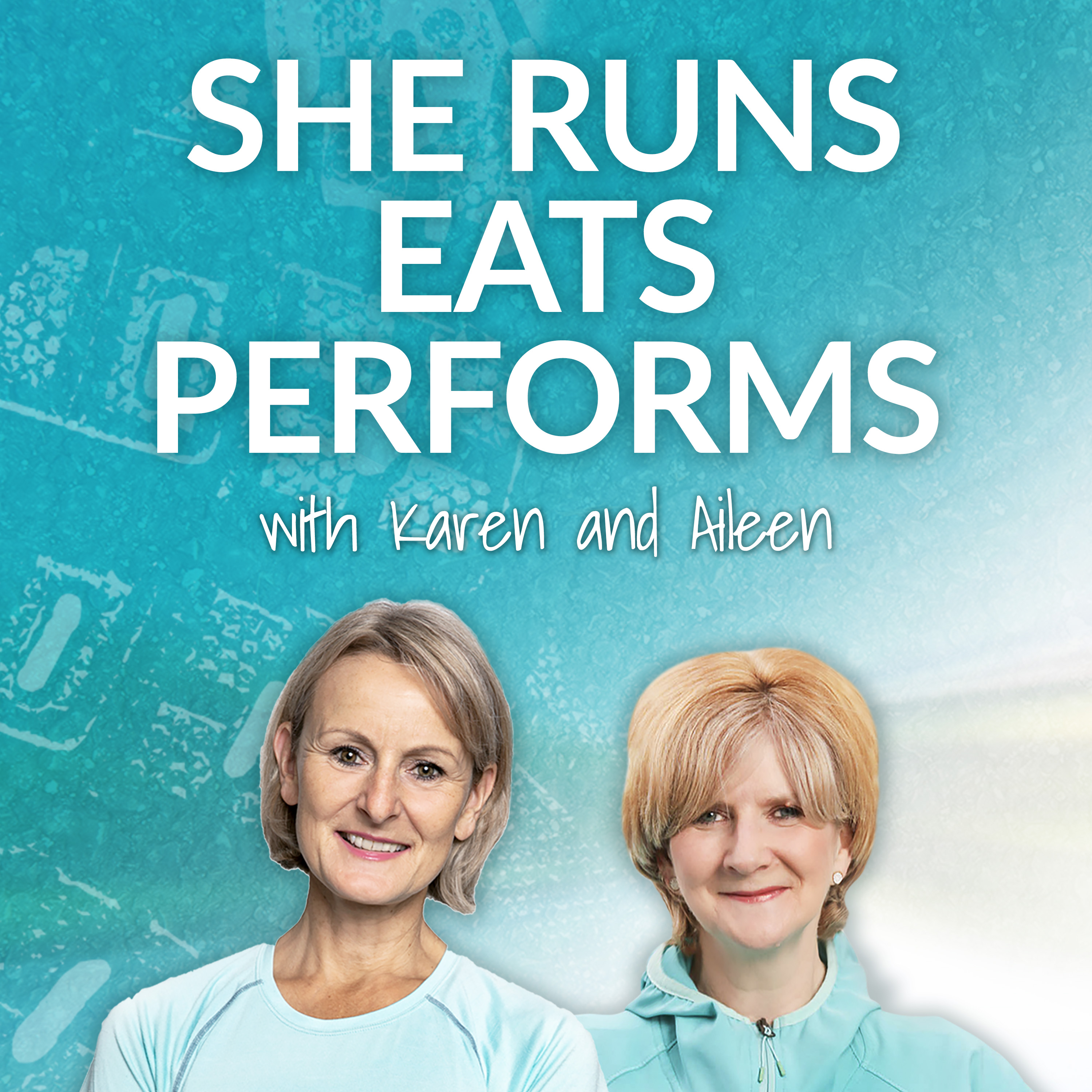HWHR Muscle Power in Midlife
Muscle Power in Midlife
Our natural biology in midlife is promoting muscle loss and fat gain which is driving the changes in our body shape during this life stage.
So we thought we’d share our suggestions to influence a healthy optimal body composition.
There are 3 areas we suggest you focus on nutritionally:
· Eat for Energy Balance – eat enough to fuel your training and adjust it down for light exercise and rest days
· Use Carbohydrates strategically for training and body composition
· Ensure your protein intake is optimal
If you would like to find out more about our Healthy Woman Healthy Runner Programme please book a FREE Discovery Call
Book your place on our next FREE TRAINING: Learn all about our Healthy Woman Healthy Runner Method.
You can choose either 12 noon or at 6pm (BST), whichever best suits your lifestyle.
Book for 12 noon GMT, 19:00 AWST, 21:00 ACST HERE
Book for 18:00 GMT, 13:00 ET, 10:00 PT HERE
We love podcasting but we love being with you LIVE even more so we can’t wait to meet you in our ZOOM ROOM!
Show Notes
(00:06)
Some of the underlying reasons around the challenges of building muscle mass in mid-life are:
· Lower levels of anabolic (muscle-building) hormones
· A reduced ability to synthesise protein
· In mid-life women there is natural decline in the estradiol form of oestrogen which is implicated in changes in muscle regeneration.
· Increased inflammatory markers may promote fat mass and compromise muscle function
Also there is research which suggests that maintaining higher levels of Lean Body Mass during the menopausal transition may be protective against the development of Vasomotor Symptoms i.e. hot sweats/flushes.
(03:26)
Why is it important to build lean muscle mass as a runner
A few key areas to consider
· Lean muscle mass increases metabolism, you’ll burn more calories at rest and during workouts which will support weight management and body composition
· When you have a strong core you will have improved running efficiency, your posture will be good, so you’ll be more efficient in your movement and form which will lead to improved endurance and less fatigue especially on long endurance runs
· When muscles are well conditioned, they perform better over distance and there will be less likelihood of fatigue, hitting the wall, suffering from cramps
· Good form and endurance will lead to a faster pace
· You will be minimising the risk of injury by minimising muscle imbalances or weaknesses
(07:02)
How to eat for Energy Balance – eat enough to fuel your training and adjust it down for light exercise and rest days
It’s important to adjust your energy intake up for long endurance runs or periods of intensive exercise and down for light exercise and rest days and doing that will support you in your body composition goals as well as your running goals.
Often women get into a habit of eating the same amount of food regardless of their energy requirements.
A personalised approach is required as every woman is different but we can consider some broad concepts.
Consider baseline requirements which you’d calculate using your BMR x Activity Factor to calculate your baseline energy requirements or maintenance calories.
This exercise gives people an indication of the amount of energy they require on a daily basis – often people are unconsciously over or undereating.
If weight loss/fat loss is a goal then factor in an energy/calorie deficit – tends to be around 300-500 calories per day – depending on individual circumstances.
Then the important thing to do is look at the days you are exercising, specifically how much exercise and the intensity, and where necessary increasing energy/food/calorie intake on those days.
Our approach is to help clients with portion sizes and athletes plate balance so they don’t get overly focussed on counting calories.
Counting calories can become obsessive and sometimes overwhelming, we aim to help clients make intuitive natural decisions about which foods to choose and how much to eat to fuel their running as well support their body composition goals.
Our key message is to develop a habit of adjusting your food intake to match your energy requirements, don’t eat the same amount of food every day regardless of your exercise plan.
(11:26)
Use of Carbohydrates strategically for training and body composition
“The key is to lose excess body fat and add lean muscle”.
This part of the episode is to help women who have excess body fat they wish to shed.
We’d advocate an approach where carbohydrate intake is based on a LOW GL food plan, on rest days or days with low activity factor eating small portions of complex carbohydrate as part of an everyday balanced plate. For weight loss we’d suggest 1/8 of plate as portion size.
On days when you’re scheduling a long endurance run, you’d plan to eat a higher amount of carbohydrate based on your activity and add in quick release carbohydrates for pre/during/post fueling.
If we link this back to “energy intake” calories would come from an increased protein portion and a small portion of healthy fats, small amount of complex carbohydrates and non-root vegetables and salads.
Following a low GL food plan approach has many benefits as well as promoting healthy body composition, many people experience improved energy levels, improved mind/mood symptoms, loss of cravings for sugary foods and fewer hormonal symptoms.
It’s important to look at what may be considered to be a healthy body fat % for women.
We have to take into consideration our genetics and physique, some people have a naturally low body fat % and others a naturally higher body fat %.
For women, generally a healthy body fat % ranges from 20-35% and tends to be at the higher end of that range for menopausal women.
Another way of assessing if you are in the healthy range is to calculate waist:hip measurement (ideally 0.8) or VF rating using bioimpedance scales – ideally 12 or under, this is variable – some people are as low as 2 and other 5/6/7.
We talk a lot about the importance of carbohydrate for fueling running performance so it’s important not to demonise carbohydrate, eat it in the right proportions for your goals.
Our key message is to eat small portions of carbohydrate for weight loss and to increase portions of CHO in line with your training plan. If you have a lower body fat composition it would be advisable to follow our everyday food plate to guide portion sizes for rest days and low activity/short run days and then increase carbohydrate on heavy endurance days.
(17:45)
Ensure your protein intake is optimal
The key things to implement are;
1. Consume optimal Protein intake above RDA (recommended daily allowance) Suggested intake is between 1.2g – 1.6g/kg/Body Weight per day for menopausal women.
2. Eat protein at every meal and snack – spread across the day – ideally in consistent amounts i.e. not all at one meal.
3. Eat protein after resistance/strength exercise as MPS can be enhanced by consuming protein immediately following resistance exercise.
Choosing lean protein foods or protein supplements which include BCAA’s, especially Leucine will help to trigger the muscle building cascade.
Protein foods which include BCAAs are
- meat, poultry, and fish
- eggs
- dairy products, such as milk and cheese
- nuts and seeds
- soy products, such as tofu and tempeh
- legumes, including beans, peas, and lentils
Aileen’s example of a daily food plan focusing on consuming an optimal amount of protein;
The way I approach it is to aim for 20-30g of protein at each meal and snack and then I’ll assume that the rest is made up in incremental amounts of protein in other foods that are on my plate.
Breakfast – 2 scrambled eggs (12g) plus 50g cottage cheese (9g) and I had that with tomatoes and spinach and a sprinkling of seeds – 21g
Lunch – I’d made a vegan bolognaise of aubergine, lentil (11g) and tomato and had that with a quinoa salad (a cup so approx. 8g) – 19g
Snack – I had a protein bar which had 20g protein. I often have a smoothie made with protein powder.
Dinner – A large chicken breast approx. 150g approx. 35g
So that would give me 95g from the main protein part of my plate and as I said there is probably small amounts of protein in other ingredients.
(26:37)
Final Thoughts
Muscle Power in Midlife – it’s important to eat for your energy requirements, adjust your carbohydrate intake to suit your body composition and running goals and follow our tips for optimal protein intake to promote building of lean muscle mass. Equally important is to focus on an exercise routine – remember to check out Episode 68 where we talk about ACSM’s (American College of Sports Medicine) FITT_VP principle which is short for Frequency – Intensity – Time – Type (FITT) – Volume – Progression (VP).
Related Topics:
Muscle Mass to Power your Running Performance
Protein Powders Do runners need them?
Disclaimer:
The suggestions we make during this episode are for guidance and
advice only, and are not a substitute for medical advice or treatment.
If you have any concerns regarding your health, please contact
your healthcare professional for advice as soon as possible.
Aileen Smith and Karen Campbell met at as nutrition students (Institute for Optimum Nutrition, London) and became lifelong friends and nutritional buddies! Both have a love of running and a passion for nutrition, delicious food and healthy living.
Together they host RUNNERS HEALTH HUB. A place for like-minded runners who are looking for simple ways to support running performance, energy, endurance, and general great health.
We are excited to be able to share our expertise, experience and short cuts with you. We hope you'll join us again. If you'd like to know more about us and She Runs Eats Performs please check out our TRAILER.
If you're ready to make learn more about how you may introduce easy nutrition into your running and training plan join our Easy Nutrition For Healthy Runners Online Programme for short videos, recipes, downloads and LIVE training and Q&A.
As a THANK YOU to you as one of our valued listeners, we have a special offer for you use COUPON CODE POD to get 33% discount off the full price which brings the price to £199.
If you’d like help from Karen and Aileen to design a personalised sports nutrition plan for your running - please contact them at hello@runnershealthhub.com
Happy Running!
Aileen and Karen

